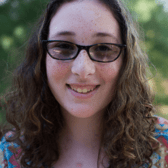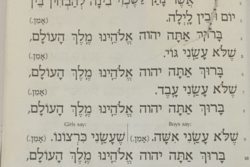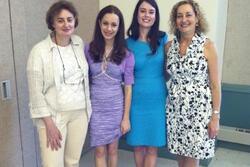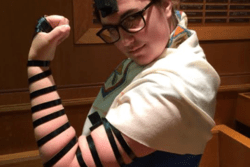The Cleveland Jew’s Dilemma
When you think of Cleveland, your mind may jump to an NBA miracle, a heated Republican Convention, or the stereotype of an industrial ‘mistake on the lake.’ You probably do not know that Cleveland has been the sight of a West Side Story-like conflict for centuries. Nearly 200 years ago, residents of the West Side of Cleveland destroyed the bridge that connected the banks of the Cuyahoga river, separating themselves from East Cleveland, and intending to become their own city. Since then, we’ve built a new bridge and stayed a single city, but we still haven’t gotten over our differences. East Siders think that West Siders are blue-collar conservatives who have failed to build up their communities. West Siders think that East Siders are snobby, rich, white people who never leave their suburban bubble. When a family friend from the West Side considered moving East, her mother laughed and said, “Don’t do that, you’ll end up marrying a Jew!” It is often joked that you need a passport to go between the two sides of the city. West Siders never go East. East Siders never venture West. Many cities have a friendly rivalry between opposing suburbs, but I do not believe that there is one as vicious or long-lasting as the dichotomy of Cleveland, Ohio.
My family, though, travels across the river weekly, bridging the gap that is so engrained into our city’s history. I live in Orange, a Cleveland suburb securely on the East Side, which has a large Jewish community including 38 synagogues and 5 day schools. The East Side of Cleveland has over 80,000 Jews living in suburbs like Orange, Beachwood, Shaker, and University Heights. But my mother is a rabbi who works at Temple B’nai Abraham (TBA), a tiny Reform temple in Elyria, a small city just West of the West Side. It is hard to estimate how many Jews live out West because there are so few, but 60 of them are members of TBA. I always loved the small community of the West Side, but I was an East Sider, and I didn’t think that it would ever change.
In seventh grade, I was attending a pluralistic Jewish day school that leaned Conservative (more traditional) in its practices. My class was only 27 people, and we all knew each other well. Seventh grade, the year of the b’nai mitzvah, arrived, and everyone was having lavish parties with DJs and themes. They primarily held their services at a few local Conservative synagogues with hundreds of students and multiple b’nai mitzvah a week. At TBA, we have only one or two B’nai Mitzvah ceremonies per year. I’d been planning on a service at an East Side Reform temple with tons of other kids, preparing to be just like everybody else. But all of their services looked the same to me, long and without personality. I attended TBA on Friday nights and felt more spiritually connected than anywhere else. I was realizing that I didn’t belong in the huge synagogues that had routine ceremonies and thousands of members.
I told my mother, “I think I want to have my Bat Mitzvah in Elyria. I think that’s where it has to be.” She was worried about logistics, but she was thrilled that I felt at home there. Since I was young, I’d stubbornly insisted that I belonged with the Conservative movement that my school taught me. But I was learning that in Elyria the congregation loved me. In Elyria they cared about my exploits, and they were proud. In Elyria, the modest décor hid the vibrant community. I did not care what others thought Judaism was, because in Elyria I was able to write my own service, lead my favorite camp songs, and joke with the congregation from the bima (podium) when I lost my place, instead of being embarrassed.
That year, I was the only student who paid to send everyone to her Bat Mitzvah on a rented bus because she knew no one would make the drive on their own. I was the only one who hosted my party without a DJ, and instead with a local klezmer band. I was the only one who wrote her own prayers and built her own service because the temple could support individuality.
Nobody crosses from the East to the West, but I do. I’ve learned that I can have a social life on the East and a spiritual life on the West, even if that is not the status-quo of my city. We are all parts of communities that have wonderful aspects and disappointing shortcomings, and this decision gave me the opportunity to take the best of both worlds. Sometimes our heart takes us in directions that our community sees as wrong, but we must pursue what we love and what we believe, building bridges between our identities. I am an East Side student, a West Side Jew, and a Cleveland writer, and all of these identities exist in my city, in my home. I can’t imagine a better place to discover myself.
This piece was written as part of JWA’s Rising Voices Fellowship.








Ohio City, across from downtown Cleveland, was the name of the town on the west side of the Cuyahoga River. It was annexed by Cleveland in 1854.
"East Cleveland", on the other hand, is a suburb of Cleveland, and is about 5 miles east of the Cuyahoga River.
But your characterization of the "passport" is spot on.
Tess, A poignant sketch of false bifurcation - why is it demanded of us to choose "between" two identities? With apologies to my Midwestern friends, I think that this binary obsession is particularly powerful here; the West Coast (I'm generalizing of course) if far less focused on are-you-this-or-that thinking. Ditto for New York, Europe, the East. That said, there are forces out there that are insisting - demanding - that people make those same faux choices. The West Side/East Side phenomenon has a lot more to it than just the time it takes to travel across that bridge. Love to read what you write. Jerry